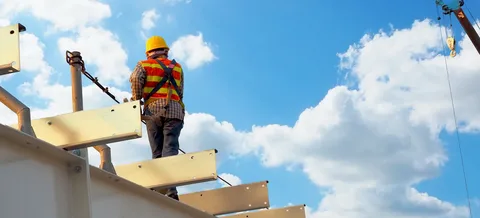Table of Contents
Understanding the Stakes
Perform Work at Height course training represents a critical component of workplace safety protocols for industries where elevated work is commonplace. The risks associated with working at heights are substantial—falls remain one of the leading causes of workplace fatalities and serious injuries across construction, maintenance, and industrial sectors. In Singapore’s rapidly developing urban landscape, with its iconic skyscrapers and continuous infrastructure projects, proper height safety training isn’t merely regulatory compliance—it’s a matter of life and death.\
The Regulatory Framework
The Workplace Safety and Health (Work at Heights) Regulations in Singapore establish clear guidelines for height safety. These regulations stipulate:
-
All persons working at heights must be adequately trained
-
Risk assessments must be conducted before commencing work
-
Fall prevention systems must be properly implemented
-
Regular inspections of height safety equipment are mandatory
As a respected safety trainer notes, “Singapore’s regulatory framework for work at height safety is among the most comprehensive in Southeast Asia, reflecting the nation’s commitment to protecting its workforce.”
What a Comprehensive Course Covers
Hazard Identification
A quality Perform Work at Height course delivers thorough training in identifying potential hazards in elevated work environments. Participants learn to recognise unstable surfaces, weather-related risks, proximity to power lines, and other dangers that might not be immediately apparent to untrained workers.
Fall Prevention Systems
Understanding the hierarchy of fall protection represents a cornerstone of height safety education. Participants explore:
-
Elimination of risks through work redesign
-
Guardrails, barriers and other collective protection systems
-
Work positioning systems that prevent falls
-
Fall arrest systems that mitigate injury when falls occur
Proper Equipment Selection and Inspection
The difference between life-threatening injury and safety often comes down to equipment selection and maintenance. Course participants gain hands-on experience with:
-
Harnesses and their proper fitting techniques
-
Lanyards, connectors and anchorage points
-
Temporary and permanent fall protection systems
-
Pre-use equipment inspection protocols
A Singapore safety auditor emphasises: “The ability to correctly inspect safety equipment before each use represents one of the most vital skills imparted during height safety training. Even minor equipment failures can have catastrophic consequences.”
Emergency Response Procedures
When incidents occur, prompt and appropriate response can be the difference between recovery and tragedy. Comprehensive training includes:
-
Rescue planning essentials
-
Suspension trauma prevention
-
First aid for height-related injuries
-
Communication protocols during emergencies
Practical Applications
Real-World Scenarios
Effective training transcends theoretical knowledge. Quality courses incorporate practical scenarios where participants apply their learning in controlled environments that simulate real workplace conditions. These exercises build muscle memory and confidence that prove invaluable in actual work situations.
Industry-Specific Applications
Different sectors face unique challenges when working at heights. Specialised modules address specific concerns for:
-
Construction workers on high-rise developments
-
Maintenance personnel accessing roof systems
-
Telecommunications technicians on towers and poles
-
Window cleaners on commercial buildings
The Economic Argument
The financial case for height safety training proves compelling when examining incident costs. Direct expenses from height-related accidents include medical treatment, compensation claims, and equipment damage. Indirect costs—often five to seven times greater—encompass productivity losses, replacement worker training, legal fees, and investigation time. A single serious height accident can devastate small businesses financially, while larger organisations face reputation damage beyond measurable costs. Prevention through proper training represents the most economical approach by every metric.
The Impact on Workplace Culture
Beyond individual skills, height safety education transforms organisational dynamics. When workers understand not just how but why safety matters, they become advocates within their teams. This cultural shift towards safety consciousness creates environments where hazardous shortcuts become socially unacceptable, and proper protocols are reinforced through peer expectations. Leadership at height-intensive workplaces recognises that safety culture, once established, becomes self-sustaining—creating workplaces where incidents trend consistently downward year after year.
The Benefits Beyond Compliance
While regulatory compliance represents an obvious motivation for height safety training, the benefits extend far beyond avoiding penalties. Properly trained workers demonstrate:
-
Enhanced overall safety awareness
-
Improved productivity through confident work at heights
-
Better problem-solving in challenging elevations
-
Reduced insurance costs and workplace disruptions
Selecting the Right Training Provider
When evaluating options for height safety education, consider providers that offer:
-
Accreditation by recognised safety authorities
-
Experienced instructors with industry background
-
Low trainer-to-participant ratios
-
Facilities that allow for realistic practice scenarios
-
Clear assessment methods with demonstrable outcomes
The Ongoing Journey of Safety
Height safety knowledge requires regular refreshing and updating. Best practices evolve, equipment improves, and regulatory standards change. Continuous education represents not just compliance but commitment to personal and team wellbeing.
Safety consciousness transforms workplace culture in profound ways. When workers understand not just what safety procedures to follow but why they matter, the entire operational environment improves. This cultural shift represents perhaps the most significant long-term benefit of comprehensive height safety education.
In today’s complex industrial landscape, where efficiency must balance with worker protection, investing in proper training saves lives, enhances productivity, and builds organisational reputation. For anyone whose work involves elevated positions—whether occasionally or routinely—completing a rigorous Perform Work at Height course constitutes an essential professional qualification.










